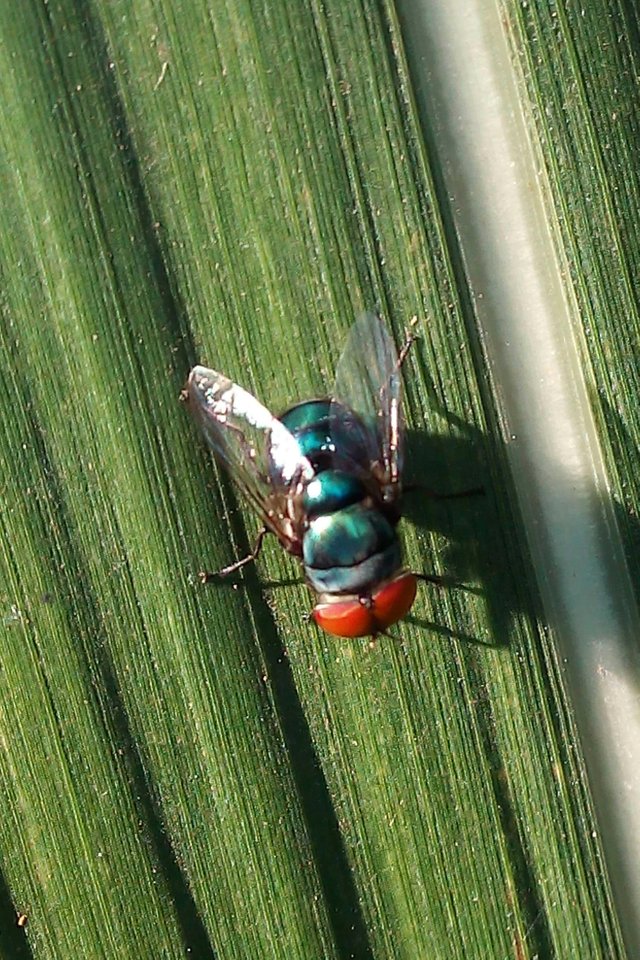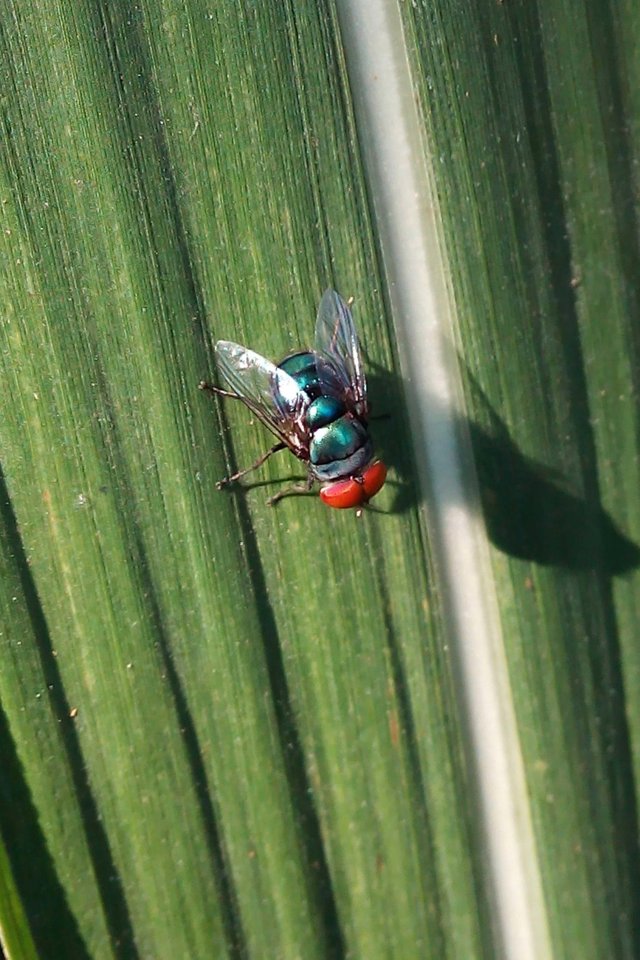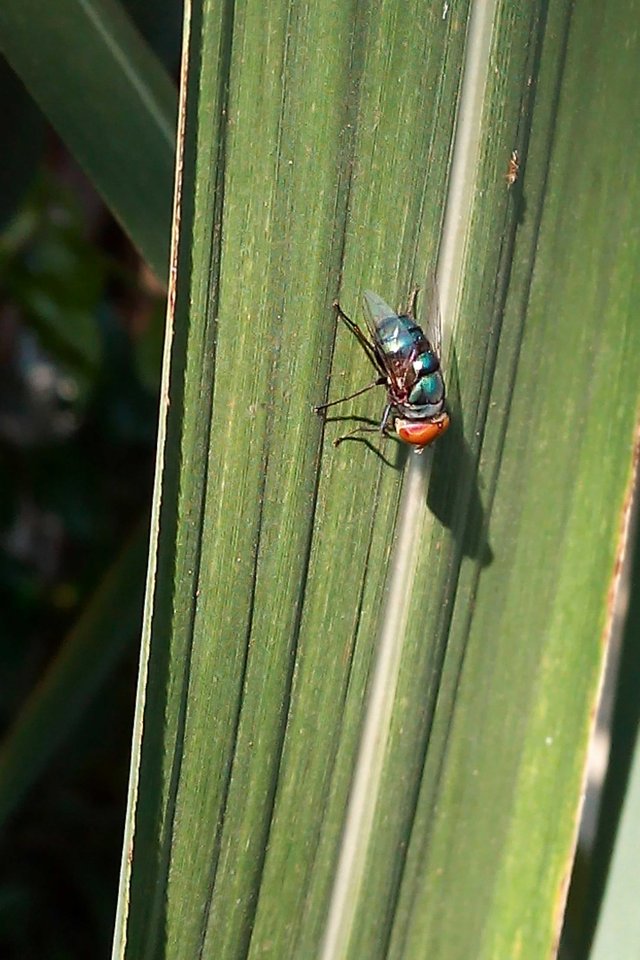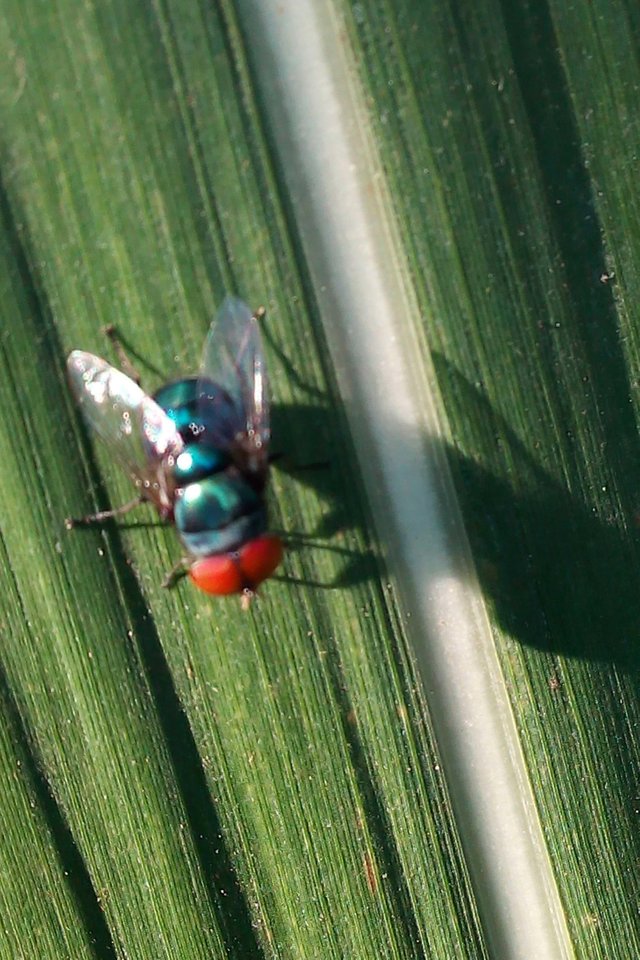CLASSIFICATION AND EXPLANATION OF RED EYE FLOW

Life Cycle Flies
In the life of the fly is known there are 4 (four) stages that start from eggs, larva, pupa and adult. Flies breed by laying eggs, white with a size of approximately 1 mm in length. Each time the eggs will produce 120-130 eggs and hatch within 8-16 hours. At low temperatures these eggs will not hatch (below 12 -13 º C). Hatching eggs will be a yellowish-white larvae, 12-13 mm in length. The end of this phase of larvae moves from where it eats to a cool place to dry its body, After that it turns into a dark brown cocoon, the same length as the larvae and does not move. This phase takes place in the summer of 3-7 days at temperature 30-35 º C, then will come out young flies and can fly between 450-900 meters, life cycle from egg to adult fly 6-20 day Adult fly longer ¼ inch, and has 4 darker black lines on its back. A few days later it is ready to produce, under normal conditions female adults can lay eggs up to 5 (five) times. Age of flies is generally about 2-3 weeks, but in cooler conditions usual to 3 (three) months Flies are not strong enough to challenge the direction of the wind, but instead the fly will fly far reaching 1 kilometer
Food
Adult flies are very active throughout the day, especially in the morning until the afternoon. These insects are very interested in everyday human foods such as sugar, milk, processed foods, human and animal feces, blood and animal carcasses. In connection with the shape of his mouth, flies eat only in the form of fluids, dried food dampened by his tongue first sucked water is an important thing in his life, without water flies only live 48 hours only. Fly eat at least 2-3 times a day.
Missing Place
Favorite places are wet places like wet trash, animal dung, rotting plants, cumulative accumulation of dirt (cages).
a. Animal waste
The most important house-fly spot is on the damp and still new animal dung (its normal is less than a week).
b. Garbage and leftovers from processed products
Besides flies likes to flourish also develops on the garbage, food scraps, fruits that are in the house or market.
c. Organic Stools
Organic waste such as animal waste, human waste. Garbage and fish food is a suitable place for breeding flies.
d. Dirty water
Houseflies breed on open water openings.
e. Adult Flies Ecology
By understanding the ecology of flies we can explain the role of flies as disease careers and may also help us in surveillance planning. Adult flies are active during the day and always in groups. At night it usually breaks although they can adapt to brighter lights.

Resting Place
On Time fly flies out the saliva and the stools that form the black dots. These signs are important to know about the fly fly. In the daytime the flies do not eat but rest on the floor of the walls, ceiling, grass and a cool place. Also liked the place adjacent to food and breeding place, and protected from the wind and the hot sun. Inside the house, flies break on the edges of food places, wires and not active at night. Place perching flies is usually at an altitude of no more than 5 (five) meters.
Fluctuations The number of flies is a photodropic insects that liquor the light. At night is not active, but can be active with the presence of artificial rays. The effect of rays on flies depends entirely on the temperature and humidity of the number of flies will increase in the temperature of 20ºC - 25ºC and will reduce the number of temperatures <10ºC or> 49ºC and the 90% optimum moisture.

Pattern of spreading fly. The district liquality pattern of domestica and Chrysomya Megachelala is a clog-spreading and cyconpropic-flouted that means this fly has a high dependency relationship with humans because the food substances need to be mostly existed in human food. Fleasing is more active in a place shielded from the light than the place that directly affects the sun. The extensive spread of these two types of flies is possible because of its high adaptive power. The density of the flies in an area, is strongly influenced by: the place of the mission, sunlight, temperature and humidity. The density of the flies will be high if the temperature between 20-25 C. The population decreases when the temperature is 450C and <100c. At very low temperatures, flies remain live in dormant conditions at adult stage or pupa. The habit of distribution & distribution of the daylight will be around the dining & place of the mission where there is also a marriage & break. The spread is influenced by his reaction to light, temperature, humidity, texture and surface color that is wounded for rest. Flies activity: lay eggs, coward, eat and fly, stalled at the temperature below 15oc. Flies are generally active on low air humidity. At the temperature above 20oC flies will be outdoors, in a place that is close to the free air. At the time of eating novels will break on horizontal surfaces or on a widely stretched or vertical places and on the roof inside the house especially at night. breakfast. Resurrection depends on the season and temperature: adult fifth life 2-4 weeks in summer and longer in winter that can reach 3 months, they are most active at 32.50c and will die at 450C. The flies beyond winter (over Wintering) as adult flicks, and breed in places that are relatively shelter like cattle enclosures and warehouses. At egg stages usually can not stand the extreme temperature and will die when it is below 50c and above 400C. The length of the instrum larva stage is highly dependent on the temperature and humidity of the environment. In temperatures -20C the larvae can last a few days, under the temperature of 100c larvaors can not develop into pupa.

Various diseases transmitted by fly, viral, bacteria, protozoa and worm eggs that claim the fly body and this depends on the species. The Musca Domestica flies can carry the eggs of the worm (Oxyrus Vermicularis, Tricuris Trichiura, Mineworms, and Ascaris Lumbricoides), Protozoa (Entamoeba Histolytica, Giardia Lamlia, and Balantidium Coli), bacteria of the intestine (Salmonella, Shigella and Eschericia Coli), Polio virus, Treponem Pertenue (Caresman Frambusia), and Mycobacterium tuberculosis. Domestica flies can act as a type of typus disease, dysentery, cholera, and skin diseases. Adult Fannia flies can transmit various types of myasis (gastric, intestinal, genitaurinary) diseases. Lalatstomoxys is a surra disease (caused by Trypanosima Evansi), anthraks, tetanus, yellow fever, traumatic miasis and enteric pseudomiasis (although rare). The green flies (Paenicia and Chrysomya) can transmit the eyes of eye casihas, bones and other organs through the wound. Sarcophaga flies can transmit skinist, mascan, sinus, vine and virtual networks.
Terima kasih kawan kawan pecinta esteem yang telah berjuang untuk membuat info yang terbaik , dan saya ucapkan juga terima kasih kepada pihak esteem , semoga yang saya paparkan bermanfaat bagi semuanya , walaupun hanya ada sedikit kesalahan saya meminta maaf kepada kalian semua , ayo semangat esteem
THANK YOU @Good-Karma
Love
Esteem
very good
Ty
Good good
Ty
Nice click
Ty
Congratulations @susumama! You have completed the following achievement on Steemit and have been rewarded with new badge(s) :
Click on the badge to view your Board of Honor.
If you no longer want to receive notifications, reply to this comment with the word
STOPDo not miss the last post from @steemitboard:
SteemitBoard World Cup Contest - The results, the winners and the prizes
Congratulations @susumama! You have completed the following achievement on Steemit and have been rewarded with new badge(s) :
Click on the badge to view your Board of Honor.
If you no longer want to receive notifications, reply to this comment with the word
STOPDo not miss the last post from @steemitboard:
SteemitBoard World Cup Contest - The results, the winners and the prizes
Macrophotography
Posted using Partiko Android